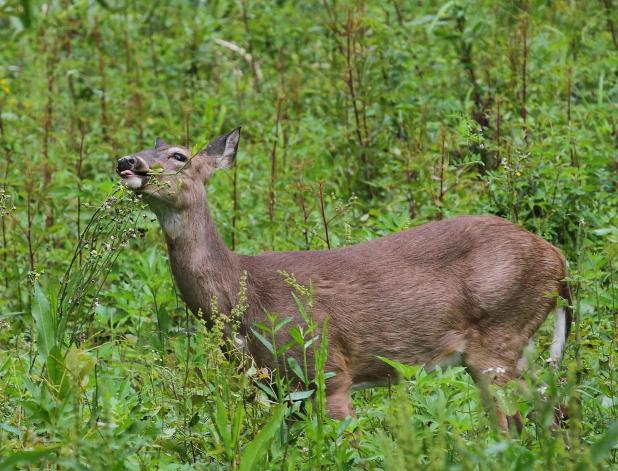
John Flores: Give wild animals a break as hurricane forces them into new areas
On Oct. 3, 2002, a Category 1 hurricane by the name of Lili made landfall at Intercoastal City. There were 15 storm-related deaths, and the cost of damage was estimated at $925 million.
St. Mary Parish happened to be on the eastern side of the hurricane, and one of the things I distinctly recall was the tidal surge.
At the time, my father-in-law, James Duay, was the land manager for St. Mary Land & Exploration Co. There was a caretaker’s house located down Highway 317 near Burns Point, where he and his wife lived.
The day after the storm, James’ brother-in-law Harry Lee Wiggins, Harry’s son Shane, James, and myself, rode down the Calumet Cut to check out the land damage and the old caretaker’s house.
The flag and cut grass in the marsh were flattened, and water was still over the banks. About the only way to navigate was to pay attention to the tree lines along the various bayous and canals, trying to stay in the middle as much as possible. Of course, it didn’t hurt knowing the land too.
The caretaker’s house (Note: still there today) sits on higher ground and is also raised off the ground about 4 feet. Unfortunately, Lili’s tidal surge turned out to be roughly 8 feet and flooded much of St. Mary Parish’s coastline, including the caretaker’s house at Burn’s Point.
My father-in-law lost everything they kept in the house, and he and his wife really suffered for while like everyone does when these things happen.
The thing I’ll never forget was seeing two spotted fawns curled up next to the house on the higher ground. We left the poor things alone wondering where the old doe was who bedded them down there.
We also wondered how in blazes they survived. The truth is wildlife in all sorts of climates around the world seem to do alright when it comes to catastrophic storms.
Last week, the Louisiana Department of Wildlife and Fisheries issued a press release titled, “Public Reminded to be Mindful of Displaced Wildlife in Wake of Hurricane Ida.”
The release makes note that wildlife species seek higher ground and are often displaced into habitat with which they may not be familiar.
The release explains that rising waters force wildlife from flooded habitat into adjacent residential and commercial areas where they may come into contact with residents. Therefore, the LDWF urges citizens to minimize contact with animals while they seek temporary refuge from their flooded home range.
It is recommended by the department that wild animals not posing a threat to humans should be left alone and should not be fed. Feeding wild animals will encourage those animals to remain in the vicinity of a new food source when they should be allowed to find natural habitat and food sources on their own, the release says.
The LDWF offers these basic tips. Avoid areas where displaced wildlife take refuge. Avoid interaction with and do not feed displaced wildlife. And avoid roadways near flooded areas to reduce likelihood of disturbance and collisions with wildlife.
Burns Point is located in Deer Hunt Area Number 7. In the aftermath of Hurricane Lili, the first gun season, which started the third week of October, was postponed for several weeks until the department could complete a habitat assessment and allow a period to reduce stress on deer who went through the coastal flooding.
When the season finally opened the next month in early November, I recall not seeing but one or two deer the whole month. It wasn’t until December that they started showing up again in the numbers I was accustomed to.
It appeared they had moved up on the levees and were quite content to stay there until the marsh began to recover.
By December, the alligator weed, willow leaves, and even a few cow peas began to grow in the marsh again.
Since we are still a couple of weeks away from the peak of the Atlantic hurricane season, it’s difficult to say if Hurricane Ida will be the last one, we’ll see this year. Last year five storms impacted Louisiana’s coastlines.
The least we can do is give wildlife a break during times like these.
